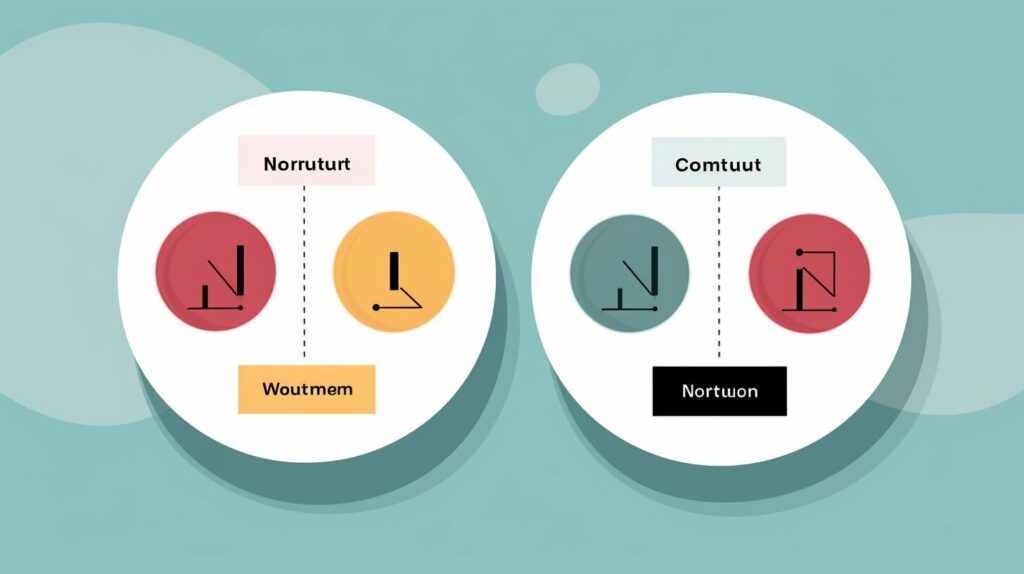Welcome to our guide on how to master the nominative and accusative cases in German. Whether you’re a beginner learning the basics of the language or an advanced learner looking to deepen your understanding, this article will provide you with valuable insights and practical tips to improve your German language skills.
First, it’s important to understand the German case system and the role of nominative and accusative cases within it. With a total of four noun cases in German grammar, mastering the nominative and accusative cases is crucial to building a strong foundation in the language.
In this section, we will introduce the importance of mastering the nominative and accusative cases in German and provide an overview of the German case system and its different grammar cases. Let’s get started!
Understanding the German Case System
Before diving into the specific cases in German, it’s important to understand the German case system as a whole. German, like many other languages, has multiple cases in its grammar. These cases are used to indicate the role that a noun or pronoun plays in a sentence.
There are four main cases in German: nominative, accusative, dative, and genitive. Each case is used to convey different information about the sentence, including the subject of the sentence (nominative), the direct object (accusative), the indirect object (dative), and possession (genitive).
In this article, we will be focusing on the nominative and accusative cases, as they are the most commonly used cases in German.
| Case | Used to indicate |
|---|---|
| Nominative | The subject of the sentence |
| Accusative | The direct object of the sentence |
| Dative | The indirect object of the sentence |
| Genitive | Indicates possession and is used less frequently than the other cases |
In the German language, the case of a noun, pronoun, or article is determined by its function in a sentence. For example, if a noun is the subject of a sentence, it will be in the nominative case, while if it is the direct object of a sentence, it will be in the accusative case.

As you can see in the chart above, the articles in German change depending on the case they are being used in. For example, the definite article “der” changes to “den” in the accusative case. This is important to keep in mind when learning and using German, as it can affect the entire structure of a sentence.
Nominative Case in German
The nominative case is the default case in German. It is used to indicate the subject of a sentence or clause. In simpler terms, the nominative case denotes the person or thing doing the action in a sentence. For example, in the sentence “Der Hund frisst das Essen” (The dog is eating the food), “Der Hund” (The dog) is in the nominative case as it is the subject of the sentence.
In German, the ending of a noun changes depending on the case it is used in. The nominative case tends to have the simplest endings, with most masculine nouns taking the suffix “-er” and feminine nouns taking the suffix “-e”.
| Gender | Nominative Case Ending |
|---|---|
| masculine | -er |
| feminine | -e |
| neuter | -es |
It’s important to note that some masculine nouns may take the suffix “-r” instead of “-er”, and some feminine nouns may not take any suffix at all in the nominative case.
Overall, the nominative case is a crucial component of German grammar. By mastering this case, learners will be better equipped to form correct sentences and communicate effectively in the language.

Accusative Case in German
The accusative case is one of the four cases in the German language and is used to indicate the direct object of a sentence. It answers the question “what?” or “whom?” in a sentence. In German, the article and adjective endings change depending on the noun’s gender, number, and case. It is essential to understand the accusative case to speak and write German fluently.
Let’s take a look at the definite and indefinite articles in the accusative case:
| Masculine | Feminine | Neutral | Plural | |
|---|---|---|---|---|
| Definite Article | den | die | das | die |
| Indefinite Article | einen | eine | eins | — |
As you can see from the table, the definite article changes to “den,” “die,” “das,” and “die” in the accusative case, while the indefinite article changes to “einen,” “eine,” and “eins.”
Here’s an example:
Ich habe den Apfel gegessen.
In this sentence, “den Apfel” is in the accusative case. It means “I ate the apple.”
The accusative case is also used after certain prepositions, such as “durch” (through), “für” (for), “gegen” (against), “ohne” (without), “um” (around), and “wider” (against).
Here’s an example:
Ich fahre durch die Stadt.
In this sentence, “durch die Stadt” is in the accusative case. It means “I’m driving through the city.”
Remember, when you use a direct object in a sentence, you need to use the accusative case. Understanding the accusative case in German can vastly improve your sentence structure and communication skills in the language.

Differences Between Nominative and Accusative Cases
Understanding the differences between the nominative and accusative cases in German is crucial for mastering the language’s case system. The nominative case is used for the subject of a sentence, while the accusative case is used for the direct object of a sentence.
For example, in the sentence “Ich esse einen Apfel” (I am eating an apple), “ich” is in the nominative case because it is the subject of the sentence, while “einen Apfel” is in the accusative case because it is the direct object of the verb “esse.”
Another key difference between the two cases is the articles used with them. In the nominative case, the indefinite article is “ein” for masculine and neuter nouns, and “eine” for feminine nouns. In the accusative case, however, the indefinite article changes to “einen” for masculine nouns, “ein” for neuter nouns, and “eine” for feminine nouns.
| Nominative Case | Accusative Case |
|---|---|
| Der Mann | Den Mann |
| Die Frau | Die Frau |
| Das Kind | Das Kind |
| Ein Hund | Einen Hund |
It’s important for learners to become familiar with these differences and practice using them correctly in order to effectively communicate in German.

Common Mistakes to Avoid
Learning any new language can be challenging, and German is no exception. When it comes to mastering the nominative and accusative cases, there are a few common mistakes that learners often make. Avoiding these mistakes can help you better understand and use these cases in your everyday German speaking and writing.
Avoiding Case Confusion
One of the most common mistakes that learners make is confusing the nominative and accusative cases. Remember, the nominative case is used for the subject of a sentence, while the accusative case is used for the direct object. Keeping this distinction in mind can help you avoid incorrect word choices and sentence structures.
For example, consider the sentence, “Ich esse einen Apfel.” (I am eating an apple.) The subject, “Ich,” is in the nominative case, while the direct object, “einen Apfel,” is in the accusative case. Confusing these cases could result in a sentence like, “Einen Apfel esse ich.” (An apple I am eating.) While this sentence is technically grammatically correct, it sounds awkward and unnatural in German.
Using the Correct Articles
Another common mistake is using the wrong articles with the nominative and accusative cases. In German, articles change depending on the case they are used in. For example, the masculine definite article in the nominative case is “der,” while in the accusative case, it becomes “den.”
Make sure to use the correct article with each case to avoid grammatical errors. This may take some practice, but paying attention to the articles in German sentences can help reinforce the correct usage.
Forgetting About Declension
Declension is an important aspect of German grammar, and it can be easy to forget when trying to master the nominative and accusative cases. Remember that nouns and pronouns in German change depending on the case they are used in. This can sometimes lead to confusion, especially for those new to the language.
Practice using declension with the nominative and accusative cases to solidify your understanding of these concepts. Pay attention to how different words change depending on the case they are in, and make note of any patterns you notice.

“Learning a new language can be challenging, but avoiding common mistakes can make the process smoother. Practice using the correct cases and articles in your German sentences, and don’t forget about declension. With time and effort, mastering the nominative and accusative cases in German can become second nature.”
Practicing Nominative and Accusative Cases
To solidify your understanding of the nominative and accusative cases in German, it’s important to practice using them in context. Here are some exercises and examples to help.
Exercise 1: Noun Gender and Article Choice
Choose the correct article for each noun based on the gender and case indicated.
| Noun | Gender | Case | Article |
|---|---|---|---|
| Buch | Neuter | Nominative | Das |
| Auto | Neuter | Accusative | Das |
| Hund | Male | Nominative | Der |
| Katze | Female | Accusative | Die |
Practice this exercise with different nouns and cases to improve your article choice skills.
Exercise 2: Fill in the Blanks
Complete the sentences with the correct form of the noun in parentheses.
- Ich habe ______ (einen Hund) gesehen.
- ________ (Die Katze) trinkt Milch.
- ________ (Die Autos) sind schnell.
- ________ (Das Buch) ist interessant.
Practice this exercise with different nouns and cases to improve your noun declension skills.
Using Nominative and Accusative in Conversation
When practicing your German language skills in conversation, make a conscious effort to use the nominative and accusative cases correctly. Start with simple sentences and gradually incorporate more complex sentence structures.
For example:
Ich sehe den Hund. (I see the dog.)
Er gibt mir das Buch. (He gives me the book.)
Remember to pay attention to noun gender, article choice, and word order when using the nominative and accusative cases in conversation.

By practicing regularly, you can become more comfortable and confident with the nominative and accusative cases in German.
Advanced Nominative and Accusative Concepts
Now that you have a solid grasp on the basics of the nominative and accusative cases in German, it’s time to delve into some more advanced concepts related to these cases.
Noun Gender and Case
One important factor to keep in mind when using the nominative and accusative cases in German is the gender of the noun being used. In German, nouns can be masculine, feminine, or neuter, and each gender has its own specific article and form for the nominative and accusative cases.
For example, the masculine article “der” changes to “den” in the accusative case, while the feminine article “die” remains the same. It’s important to pay attention to these gender-specific changes when using the nominative and accusative cases in German.
Prepositions and Case
Another advanced concept related to the nominative and accusative cases in German is the use of prepositions. Different prepositions require different cases, and it’s important to know which prepositions require the nominative or accusative case in order to use them correctly.
For example, the preposition “mit” requires the dative case, while the preposition “durch” requires the accusative case. Knowing which prepositions require which cases can be tricky, but it’s an important part of mastering the German case system.
Word Order
Finally, it’s important to understand how the use of the nominative and accusative cases can affect word order in German sentences. In general, the subject of the sentence (in the nominative case) comes before the object (in the accusative case).
However, there are certain situations where this word order can be changed for emphasis or rhetorical effect. For example, beginning a sentence with the accusative object can create a dramatic or suspenseful tone, while placing the object before the subject can be used to contrast or compare the two.

Overall, mastering the nominative and accusative cases in German is an important part of becoming fluent in the language. By understanding advanced concepts like noun gender, prepositions, and word order, you can take your understanding of these cases to the next level and become a more confident and effective communicator in German.
Conclusion
Congratulations on taking the first step towards mastering the German case system! We hope that this article has provided you with a comprehensive understanding of the nominative and accusative cases and how they fit into the larger framework of German grammar.
Remember, practice makes perfect! The more you practice incorporating the nominative and accusative cases into your speech and writing, the more natural they will become.
Keep Learning
If you’re hungry for more knowledge on the German case system, don’t stop here! There are many more advanced concepts to explore, such as the dative and genitive cases. Additionally, be sure to keep an eye out for common mistakes and continue practicing regularly to solidify your understanding.
Thank you for reading and good luck on your German language journey!
